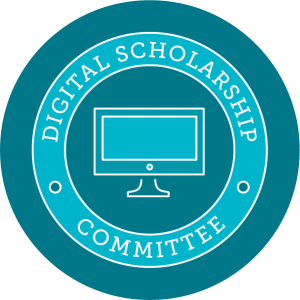 A new chapter of Harry Potter has been making rounds in social media circles lately. However, this is Harry Potter like you’ve never experienced. This abridged version of the fifth book in the series was written using a predictive text keyboard, and the results are arguably the funniest thing you’ll ever read.
As part of the series on accessibility, it is a good idea to look at transferable information– in this case fonts. Now, regardless of what Microsoft Suite application, PDF editing software, or website builder the number of fonts one has available is staggering. However, not all should be used, if the goal is accessibility to… Read more »
This is the second half of the blog posts on Accessible PDFs. Part one covered why we should strive to make PDFs accessible, where to purchase Adobe Acrobat Pro DC, and how to make Accessible PDFs. This post continues with that creation process, but looks at Forms and interactive PDFs. It also… Read more »
This blog post continues the series on accessibility in the digital world, and is also the second in a sub-series on Non-HTML Content Accessibility; it will be the first of two (2) posts on PDFs. The great thing for those who use Adobe Acrobat Pro DC (which is what we have at UNT, and it… Read more »
The simplest form of Twitter bot will generate text and then post it to Twitter. Now, of course you must supply your bot with source text if you want it to generate new text. This is the basis of most bot text generation and the model that we will follow. From here, we want to… Read more »
What is Non-HTML content? Non-HTML content is more common than you might at first think. Do you use Microsoft Office apps (Word, Excel, Outlook, or PowerPoint)? How about Adobe Acrobat? These are very common applications and software, used nearly everyday, and also classified as Non-HTML. This means that their coding… Read more »
What is Universal Design? Universal design in the broadest sense is the design and composition of an environment so that it can be accessed, understood and used to the greatest extent possible by all people regardless of their age, size, ability or disability. This takes place most noticeably in the physical world, with building and public… Read more »
What is Digital Accessibility? More frequently, we hear the term digital accessibility, but what does digital accessibility mean? “Digital accessibility is the ability of a website, mobile application or electronic document to be easily navigated and understood by a wide range of users, including those users who have visual, auditory, motor or cognitive disabilities”… Read more »
Repetitive lyrics in pop songs has always been a sore spot for the music snobs of the world. But is repetitiveness really a negative thing? How present are these repetitive trends anyways? And how can we begin to measure or visualize the repetitiveness in songs? Colin Moris set out to answer some of these questions by… Read more »
Any avid internet user or enthusiast is sure to have seen of, heard of, or interacted with bots in their time between looking at memes and cat videos. Maybe even during. (CleverBot) Bots are more widespread and impactful in internet spaces than ever before. And this is especially true on platforms like Twitter, which provide easily… Read more »
A new chapter of Harry Potter has been making rounds in social media circles lately. However, this is Harry Potter like you’ve never experienced. This abridged version of the fifth book in the series was written using a predictive text keyboard, and the results are arguably the funniest thing you’ll ever read.
As part of the series on accessibility, it is a good idea to look at transferable information– in this case fonts. Now, regardless of what Microsoft Suite application, PDF editing software, or website builder the number of fonts one has available is staggering. However, not all should be used, if the goal is accessibility to… Read more »
This is the second half of the blog posts on Accessible PDFs. Part one covered why we should strive to make PDFs accessible, where to purchase Adobe Acrobat Pro DC, and how to make Accessible PDFs. This post continues with that creation process, but looks at Forms and interactive PDFs. It also… Read more »
This blog post continues the series on accessibility in the digital world, and is also the second in a sub-series on Non-HTML Content Accessibility; it will be the first of two (2) posts on PDFs. The great thing for those who use Adobe Acrobat Pro DC (which is what we have at UNT, and it… Read more »
The simplest form of Twitter bot will generate text and then post it to Twitter. Now, of course you must supply your bot with source text if you want it to generate new text. This is the basis of most bot text generation and the model that we will follow. From here, we want to… Read more »
What is Non-HTML content? Non-HTML content is more common than you might at first think. Do you use Microsoft Office apps (Word, Excel, Outlook, or PowerPoint)? How about Adobe Acrobat? These are very common applications and software, used nearly everyday, and also classified as Non-HTML. This means that their coding… Read more »
What is Universal Design? Universal design in the broadest sense is the design and composition of an environment so that it can be accessed, understood and used to the greatest extent possible by all people regardless of their age, size, ability or disability. This takes place most noticeably in the physical world, with building and public… Read more »
What is Digital Accessibility? More frequently, we hear the term digital accessibility, but what does digital accessibility mean? “Digital accessibility is the ability of a website, mobile application or electronic document to be easily navigated and understood by a wide range of users, including those users who have visual, auditory, motor or cognitive disabilities”… Read more »
Repetitive lyrics in pop songs has always been a sore spot for the music snobs of the world. But is repetitiveness really a negative thing? How present are these repetitive trends anyways? And how can we begin to measure or visualize the repetitiveness in songs? Colin Moris set out to answer some of these questions by… Read more »
Any avid internet user or enthusiast is sure to have seen of, heard of, or interacted with bots in their time between looking at memes and cat videos. Maybe even during. (CleverBot) Bots are more widespread and impactful in internet spaces than ever before. And this is especially true on platforms like Twitter, which provide easily… Read more »
 A new chapter of Harry Potter has been making rounds in social media circles lately. However, this is Harry Potter like you’ve never experienced. This abridged version of the fifth book in the series was written using a predictive text keyboard, and the results are arguably the funniest thing you’ll ever read.
A new chapter of Harry Potter has been making rounds in social media circles lately. However, this is Harry Potter like you’ve never experienced. This abridged version of the fifth book in the series was written using a predictive text keyboard, and the results are arguably the funniest thing you’ll ever read.
 A new chapter of Harry Potter has been making rounds in social media circles lately. However, this is Harry Potter like you’ve never experienced. This abridged version of the fifth book in the series was written using a predictive text keyboard, and the results are arguably the funniest thing you’ll ever read.
A new chapter of Harry Potter has been making rounds in social media circles lately. However, this is Harry Potter like you’ve never experienced. This abridged version of the fifth book in the series was written using a predictive text keyboard, and the results are arguably the funniest thing you’ll ever read.


